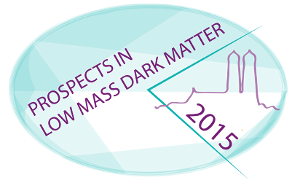Speaker
Dr
Johannes Treis
(MPG Semiconductor Laboratory)
Description
The use of scientific grade CCD detectors in the scope of the DAMIC experiment has demonstrated the usefulness of solid state detectors for the search for WIMP interactions with matter. The bulk material of the detector (here: silicon) serves as both interaction medium and detector at the same time. The low readout noise, in combination with the low mass of the silicon nucleus, makes the instrument especially sensitive to nuclear 2recoils with keV scale energies from WIMPs with masses < 10 GeV/c .
Hereby, the sensitivity in terms of recoil energy deposition is above all depending on the readout noise of the detector. In this context, the technique of repetitive non-destructive readout (RNDR) of the detectors is a very promising option to drastically push the sensitivity limit.
Measuring the deposited charge repetitively in a statistically independent way yields an average value, whose effective noise (i.e. the variance) corresponds to the readout noise of a single measurement divided by the square root of the number of measurements. Detector structures based on the combined detector-amplifier structure DEPFET (DEpleted P-Channel FET) are an ideal platform for the implementation of RNDR. The DEPFET structure is integrated on a fully depleted substrate and stores the bulk-generated charge in a potential minimum directly underneath its external gate, where it influences the channel conductivity. Signal acquisition is usually done by comparing the values before and after the removal of the signal charge. For the implementation of RNDR, a sensor pixel is composed of two DEPFET devices, between which the charge can be transferred. Each transfer then corresponds to a complete measurement.
DEPFET devices based on state-of-the-art technology exhibit a readout noise of 3-4 e- ENC. Noise levels of 0.2 e- ENC and below have been demonstrated with RNDR DEPFETs based on this technology. Additional functional features provide for an extremely low level of instrument-generated background. The pixel size and substrate thickness can be adapted over a wide range of sizes to the experimental requirements, making large area RDNR arrays promising candidates for a solid state detector based low mass WIMP detection experiment.
Primary author
Dr
Johannes Treis
(MPG Semiconductor Laboratory)

